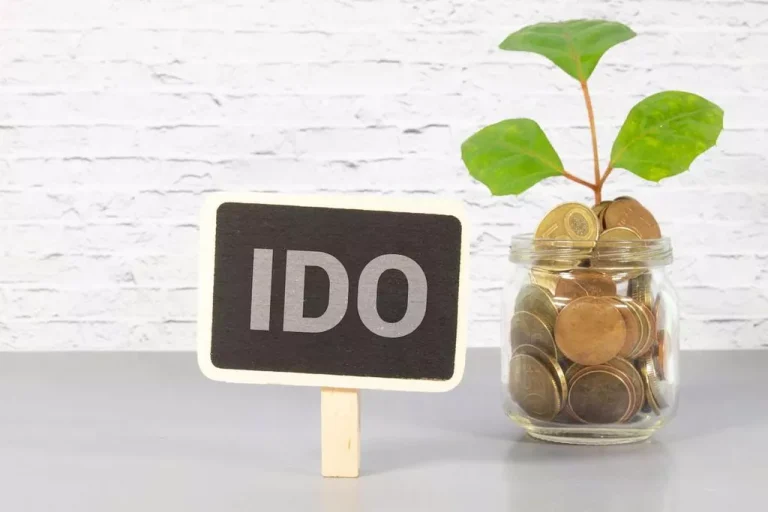Crypto payments vs traditional systems: Navigating the future of financial transactions by XGo Coinmonks Leave a comment
Content
There’s only a community of people who all together and go by rules on the platform. https://www.xcritical.com/ Therefore, there aren’t any extra protections that are necessary for the system so it’s much cheaper than the traditional payment system. Consumers can now make payments with cryptocurrencies linked to Visa and Mastercard cards.
- Once the confirmation for a payment is locked in between two parties, a corresponding amount of digitised assets are used to actually move value between parties.
- Some countries have embraced and regulated cryptocurrencies, providing legal frameworks for their use.
- BNPL payment options like Afterpay or Klarna, for example, allow customers to break down payments into smaller, interest-free installments.
- Cash transactions are relatively secure as they do not involve sharing personal financial information.
- Blockchain technology ensured cryptocurrency transactions were immutable, transparent, secure, and anonymous.
The Impact of Blockchain on 5 Major Industries
This article delves into a comparative analysis of crypto and traditional payment systems, exploring their advantages, drawbacks, and the broader implications for the future of global finance. In Decentralized application traditional payment systems, control lies with centralized entities such as banks and financial institutions. This centralization can lead to a lack of transparency and accountability, as users must trust these intermediaries to manage their funds securely.
Blockchain: What Does It Mean for Banks and Fintech?
In conclusion, the comparison between cryptocurrencies and traditional payment methods reveals a spectrum of advantages and challenges for each. The future of payments may very well involve a harmonious coexistence of both, offering users greater choice and flexibility while navigating the intricacies of an ever-evolving financial landscape. In this dynamic landscape, the synergy between cryptocurrencies and traditional payment methods is gaining momentum. The integration of cryptocurrencies into traditional systems, like using crypto-enabled debit cards, aims how to use blockchain payments to bridge the gap between the advantages of both worlds. Additionally, innovative fintech companies like Inqud are working to create seamless solutions that enable users to integrate cryptocurrencies into their daily lives alongside traditional currencies.
Crypto payments vs. traditional systems: Navigating the future of financial transactions (Express Summary)
One of the biggest criticisms of traditional bank transfers is the lack of transparency. It’s often difficult to track the progress of a transfer, and unexpected fees can arise. A survey conducted by PwC revealed that 45% of respondents cited transparency as a major pain point in traditional cross-border payments.
Determining whether traditional banking or cryptocurrency is the better option hinges on your individual needs and preferences. Both approaches have their strengths and weaknesses, making the decision contingent on what aligns best with your requirements. Opting for cryptocurrency might be suitable if you prioritize transparency, security, and decentralization. Conversely, if regulation and customer service matter more to you, and you value the familiarity of conventional systems, traditional banking could be the preferable route. Entrepreneurs should be aware of regulatory considerations in different jurisdictions.
If a malicious user manages to access another’s private keys, they can spend the funds in the wallet. Some of the most famous cryptocurrency hacks have happened in this way, due to points of failure in wallet solutions, but never due to points of failure in the blockchain system. This is why offline wallets, also referred to as ‘cold-storage’, have become an increasingly popular option to prevent hacking. In fact, many consumers may believe that society has already realised that goal. Thanks to payments apps such as Venmo and Cash App alongside open banking platforms, over 65 per cent of Americans are expected to be mobile banking users by 2025. In Asia – the global leader in digital finance adoption – online banking is expected to reach nearly 1 billion users by 2024.
I agree to the Privacy Policy and give my permission to process my personal data for the purposes specified in the Privacy Policy. Other regions worldwide offering sandboxes for high-tech startups and enterprises include Singapore, Australia, the UAE, Malaysia, Bahrain, Hong Kong, and Saudi Arabia. Enacted in 2000 at the height of the e-commerce boom, the E-SIGN Act validates electronic signatures and records in interstate and foreign commerce, making electronically entered contracts legally binding. Similarly, UETA grants legal status to electronic records and signatures, treating them in the same measure as traditional paper documents. Decentralized projects may involve the issuance of tokens that, in some cases, could be classified as securities.
This automation not only enhances efficiency but also minimizes the potential for human error and fraud. By executing payments automatically when certain criteria are met, smart contracts streamline processes across various industries, including e-commerce and supply chain management. As businesses increasingly adopt these technologies, we can expect to see a surge in smart contract-enabled payment solutions that offer greater reliability and security.
One of the most significant advantages of Web3 payment solutions is their decentralized nature. Unlike traditional payment systems that rely on banks and financial intermediaries, Web3 payments operate on blockchain networks that allow users to transact directly with one another. This decentralization reduces dependency on third parties, minimizing the risk of single points of failure and enhancing overall system security. Users can engage in peer-to-peer transactions without the need for intermediaries, fostering a more inclusive and transparent financial environment. Web3 payment solutions are rapidly gaining traction as a transformative force in the financial landscape. By leveraging blockchain technology and decentralized finance (DeFi), these systems offer numerous advantages over traditional payment methods.
The growing popularity of cryptocurrencies is driving interest in Web3 payment solutions. This trend not only provides consumers with more choices but also positions businesses to capitalize on the expanding digital economy. Web3 payment solutions break down geographical barriers, enabling seamless cross-border transactions without relying on traditional banking infrastructure.
This section explores the key trends and innovations shaping the future of payments. In traditional payments, transaction details are typically kept confidential by financial institutions, making it challenging for users to verify transactions independently. In contrast, Web3 payments utilize blockchain technology to create a public ledger where every transaction is recorded immutably. This level of transparency fosters trust among users, as they can audit transactions themselves and hold bad actors accountable.

In the rapidly evolving landscape of financial transactions, the emergence of Web3 payment solutions marks a significant turning point in how we conduct business and manage our finances. This comparative analysis has highlighted the key differences between traditional payment systems and their Web3 counterparts, particularly in terms of security features, efficiency, and user empowerment. Enter Web3 — a paradigm shift that leverages decentralized technologies to create a more secure and user-centric internet. Web3 payment solutions utilize blockchain technology to enhance security through decentralization, transparency, and cryptographic measures. Unlike traditional systems that rely on intermediaries, Web3 empowers users by giving them greater control over their financial transactions. The intertwining of software and finance is rapidly driving the payments industry towards its holy grail of a seamless global banking ecosystem.

Digital payments involve multiple steps and entities working together to ensure money is securely transferred from a payer (the person making the payment) to a recipient (the person or business receiving the payment). Both systems can coexist and complement each other harmoniously, provided we witness more regulatory clarity and well-defined blockchain integration standards. As Bitcoin grew in popularity, programmers explored new ways to expand Bitcoin’s functionality, thereby giving birth to alternative cryptocurrencies like Ethereum, Litecoin, and Cardano. Some of the features they aimed to improve included scalability, affordability, and speed. Key features are a bank account, physical currencies, intermediaries, non-volatile and no anonymity.
Securities regulations may apply, and compliance with these regulations is necessary to avoid legal issues. Take self-paced courses to master the fundamentals of finance and connect with like-minded individuals. Someone on our team will connect you with a financial professional in our network holding the correct designation and expertise.
